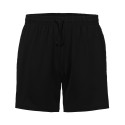- label News
- favorite 0 likes
- remove_red_eye 15838 views
- comment 0 comments
Whoever thinks washing and ironing isn’t rocket science is mistaken. The changes that can occur in fabrics due to incorrect handling are usually irreversible.
Washing and ironing aren't as simple as they seem.
Every fabric item you buy in a shop usually comes with instructions from the manufacturer on how to wash and iron it. However, sometimes there’s a slight problem with these labels. If they’re in direct contact with our bodies, they can feel quite unpleasant. Which is where scissors and a rubbish bin come in.
But what to do when care is required? If you know the material your individual garments are made of, then there’s no problem.
The treatment of fabric which is just made of cotton, or even with something added, doesn't have to pose a problem if you know what to do. Cotton items can withstand temperatures as high as ninety degrees. However, coloured items shouldn’t be washed at such a high temperature every time, because they’d start to fade.
A disadvantage of cotton clothing is its creasability. You should therefore hang it immediately after washing, and store it folded. Otherwise you’ll get pretty annoyed when you’re ironing it.
Synthetic blends have different requirements
If a synthetic material (e.g. elastane) is added to the cotton, then it’s good to reduce the temperature of the iron. Ideally, turn everything inside out, and iron the items this way as well. It may involve a bit more work, but your clothes will stay looking nice for longer. Denim, which is mostly used for trousers, is a somewhat ungrateful material. No matter how gently you wash them, over time they’ll stretch by at least one size.
One piece of advice is appropriate here – wash similar colours together. If you buy the very popular cotton t-shirts and vests with an elastane or synthetic blend, then you can be sure that not only will they feel comfortable on your body, but they’ll fit perfectly too. The elastane will provide the necessary stretch. Washing is recommended at temperatures no higher than forty degrees. Fabric with an elastane blend usually doesn’t even have to be ironed.
If you have a fabric with a higher artificial fibre content on your ironing board (or table), then you should try ironing it inside out first. This is especially true for polyester and polyamide.


Comments (0)